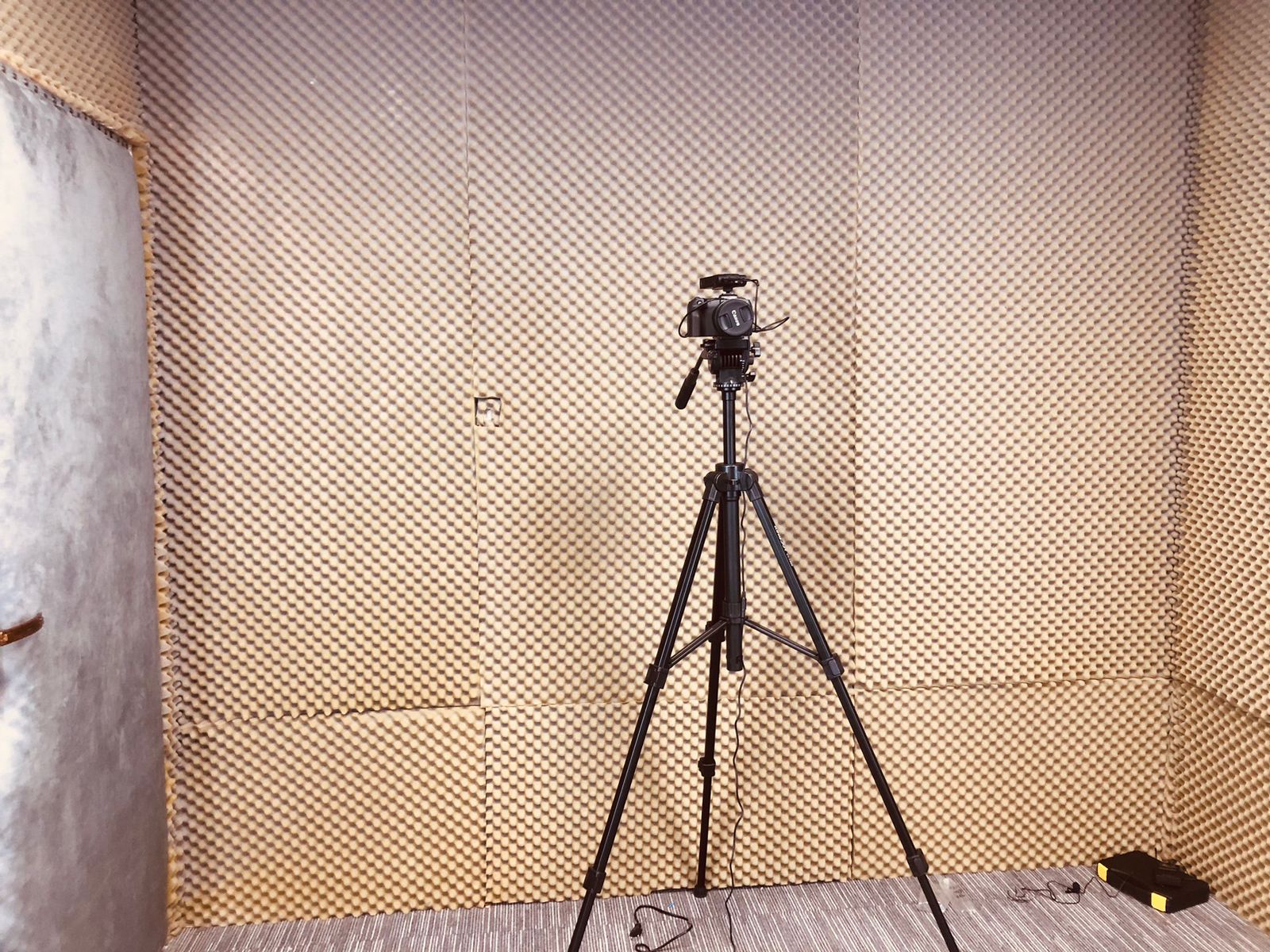Hello all
we are a learning platform geared towards mid and high school students. Our platform utilizes a combination of pre-recorded and live video content, wherein the teacher stands in front of a smart screen to deliver their lectures, which are captured by a camera.
We are considering an upgrade to our current video offerings by incorporating augmented reality technology. Our plan is to use 3D augmented reality models to accompany the teacher's explanations, in addition to utilizing a smart board for writing. This new approach would allow for a more engaging and interactive learning experience for our students, as they would be able to visualize complex concepts and ideas in a three-dimensional space, making the material easier to comprehend.
The current studio is used for both prerecorded and live video streams. The center piece of our setup is a large 70-inch screen which is used by the teacher to explain class material. The video is recorded by a stationary Canon EOS RP camera, mounted on a tripod with a microphone attached, that captures high-quality footage of the teacher as they deliver their lessons. The studio has isolated walls made from foam panels, which helps to reduce external noise and ensures that the audio captured by the microphone is clear and crisp. The dimensions of the studio are 3 meters long, 3 meters wide, and 2.5 meters high, providing enough space for the teacher to move around comfortably while delivering their lessons. Overall, our studio is a well-equipped space that is designed to provide an immersive and engaging learning experience for students, and with the right upgrades, it has the potential to take your productions to the next level.
We are considering shifting to AR virtual production, particularly using a Green screen, because of our budget and technical expertise limitations. However, we have a few questions that we are researching to ensure we make the right decision.
- Is having a large monitor that the teacher uses to explain lectures in front of a green wall would affect keying functionality, particularly if we take into consideration the shadows of the screen on the walls. Additionally, we want to know if having metal rods that the screen is mounted on would impact the quality of the production.( attached image bellow
- Can we use a Canon EOS RP camera for augmented production to display 3D models in front of the teacher and a smart screen.
- We have been facing difficulties with lighting due to reflections on the smart screen, especially when using rotated camera angles (see image below). We are wondering whether it would be suitable to have a studio with dimensions of 3 x 3 x 2.5 (length, width, and height). Additionally, do you have any tips on how to address the issue of light reflections on the screen.
- Is it necessary to isolate the studio using foam panels, or if there are special types of microphones that can eliminate all noise without needing that level of isolation. Currently, we are using a microphone attached directly to the camera for audio, which has proven to be difficult to manage. Do you have any suggestions for microphones that we can use in our case?



Image Description: The image shows a smart screen with reflections from lights that are positioned in front of it, making it difficult to see the content on the screen.
Hi,
First, note that in Aximmetry we refer to AR and Green Screens as separate methods.
Green Screen: https://aximmetry.com/learn/virtual-production-workflow/preparation-of-the-production-environment-phase-i/different-studios-for-virtual-production/green-screen/
AR: https://aximmetry.com/learn/virtual-production-workflow/preparation-of-the-production-environment-phase-i/different-studios-for-virtual-production/ar-xr-augmented-reality/
What you are describing is a Green Screen setup.
1.
Since you have a stationary camera, you likely want to use Clean Plate: https://aximmetry.com/learn/virtual-production-workflow/preparation-of-the-production-environment-phase-i/green-screen-production/virtual-camera-workflow/keying/#clean-plate and in this case, the metal rods shadows aren't such a big of an issue.
However, maybe you should buy a green texture or panel and place it between the bars and the smart screen, and then if your smart screen will be on a wall in the virtual world, then it won't be such a big problem that smart screen's shadows are included in the keying. As the shadows can look natural on the virtual wall.
Alternatively, you should also paint the metal rods green along with the wall.
2.
Yes, you can put 3D models in front of the teacher and the smart screen. Aximmetry will generate a Billboard from the teacher and the smart screen. And you will be able to place this billboard(s) anywhere in the virtual world.
3.
4.Proper lighting is very important in Green Screen production. You will want to use diffuse lights and a bigger room helps you to achieve that.
Your current light rods will not just cause problems with the smart screen, but they might also interfere with the Green Screen. And the talent will probably not get enough light from the front if those are the only light source in that room.
Maybe, you can buy light rods for it that produce a much more diffuse light with less intensity.
You should consider putting different light sources in that room.
We can not recommend actual hardware. And personally, I have little knowledge in this area.
Note, you can use the touch interactions of the smart screen as inputs in Aximmetry, there are some example compounds of it the Tutorials and Samples package at: [Tutorials]:Paint And Touch\
You might be eligible for discounts as an educational organization: https://aximmetry.com/grants. You could write to sales@aximmetry.com for further information about that.
Warmest regards,